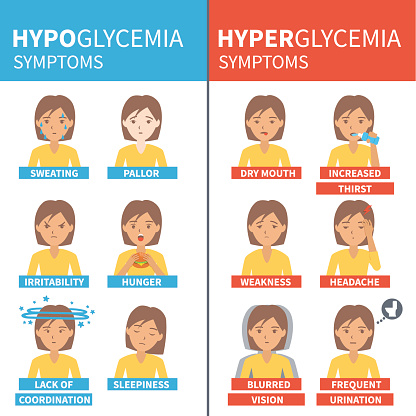Although type 2 diabetes can be very manageable, it’s nothing to take lightly, which means it’s crucial that it’s detected as early as possible. It is estimated that 29 million Americans have diabetes, and 1 in 4 of those are unaware that they have it, according to the CDC. That means there are more than 7 million Americans who are not receiving the proper treatment, not making the proper lifestyle changes, and are at risk of serious complications. It may be hard to detect, the symptoms of diabetes – types 1 and 2 – can be fairly subtle. It’s possible to have developed type 2 diabetes and not know for years, so it’s important that you know what symptoms to look for. These are some of the more common signs of diabetes.
Increased Thirst and Frequent Urination
The excess sugar build-up in your bloodstream causes fluids to be pulled from the tissues of your body, which can cause excessive thirst and increased urination. Essentially, your body is trying to flush out the extra glucose.
Increased Hunger
In addition to extra thirst, individuals who develop type 2 diabetes may develop excessive hunger as well. Without proper insulin levels, your muscles and organs may become fatigued. When blood sugar levels drop sharply, the body may think it needs to be fed and will crave more glucose than is necessary.
Weight Loss
Despite the likely increase in food consumption, weight loss can still occur. Individuals may lose 10-20 pounds in a matter of a few months, but not in a healthy manner. The inability to properly metabolize glucose causes the body to use other means, such as protein and calories.
Fatigue
With the extra work your body is putting in to compensate for its glucose deficiency, and if cells aren’t getting the sugar they need, it can cause the individual to become tired and irritable.
Blurry Vision
Elevated blood sugar levels can cause fluid to be taken from your lenses, which may cause difficulty focusing or flashes of light to be seen.
Slow Healing
When someone is diabetic, cuts and bruises might become more difficult to heal, and their ability to fight infections could weaken.
Skin Problems
Different skin conditions, such as itching or darkened skin, may occur with diabetes. Itching may be caused by dry skin or poor circulation. Darkened skin is referred to as acanthosis nigricans and usually occurs in the neck or armpit areas – which may be a sign of insulin resistance.
These are some of the most common signs of diabetes, but you can find other symptoms and more information at www.Diabetes.org. Catching diabetes as early as possible is important to reduce the chances of complications arising from this disease. If you have any of these symptoms, it’s imperative that you see your doctor, and he or she will likely administer a diabetes test in order to check glucose levels.
Learn more about living with diabetes and how you can become a participant in one of our studies!

Speak Your Mind
You must be logged in to post a comment.